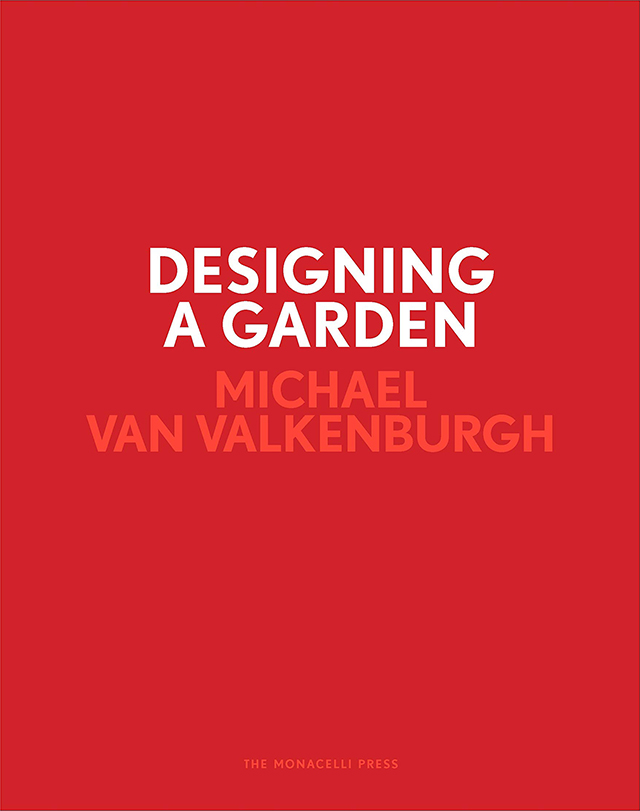Designing a Garden
Designing a Garden: Monk's Garden at the Isabella Stewart Gardner Museum
Michael Van Valkenburgh
The Monacelli Press, October 2019
Hardcover | 7-1/2 x 9-1/2 inches | 208 pages | English | ISBN: 978-1580935524 | $40.00
PUBLISHER'S DESCRIPTION:
In Designing a Garden, Van Valkenburgh presents the design of the Monk’s Garden at the Isabella Stewart Gardner Museum, an intimate, walled garden that Laurie Olin has described as “a masterpiece, and not a minor one.” The book documents the evolution of the garden’s design, which is based on the concept of meandering paths through a dreamlike woodland to create a contemplative space. Sketches and models show how the idea was worked out, and lush photographs reveal the completed garden through the seasons.
Van Valkenburgh’s text explores the origins of his love of landscape and plants in his family farm in Upstate New York and how this has influenced his intuitions as a designer. He shares the full background story of the Monk’s Garden, focusing on the experimental nature of design work as well as the challenges and satisfactions of the small scale and the historic and cultural context. Designing a Garden provides a unique first-person account of the design process from the most prominent landscape architects in the country.
Michael Van Valkenburgh is the founder of Michael Van Valkenburgh Associates (MVVA) and formerly the Charles Eliot Professor in Practice of Landscape Architecture at the Graduate School of Design at Harvard University. Based in New York and Cambridge, Massachusetts, his firm is widely acknowledged as a leader in the discipline of landscape architecture.
REFERRAL LINKS:
My library at home has many books I classify as "case studies," but most of them are about buildings rather than landscapes. The former range from small houses to museums and building complexes, but the latter tend toward the large end of the spectrum, such as with titles devoted to the High Line, Millennium Park, Brooklyn Bridge Park, Madrid Río, and Parc de la Villette. I can think of a couple exceptions to this preference for extra-large landscape case studies: the 2007 book about the green roof for the headquarters of the ASLA in Washington, DC, and Designing a Garden, the new book on the seven-year-old Monk's Garden at the Isabella Stewart Gardner Museum in Boston. Both books happen to be about landscapes designed by the firm of Michael Van Valkenburgh, who also designed the 85-acre Brooklyn Bridge Park — a waterfront park large enough to contain 500 versions of the 7,500-square-foot Monk's Garden.
Curiously, Designing a Garden is not the first book devoted to Monk's Garden at the Gardner. In 2014, two years after Renzo Piano's renovation and expansion of the museum and one year after the garden opened to the public, Michael Van Valkenburgh Associates won an ASLA Honor Award for Monks’ Garden: A Visual Record of Design Thinking and Landscape Making, a book that was commissioned specifically for an exhibition at the Gardner. Both books trace the process and progress of the design from inception to construction, so why release a second book six or seven years later, outside of the fact the first one is near-impossible to obtain? The most obvious answer is because it's a garden: a landscape that changes over time. When comparing the photos in the new book with those on the ASLA website, Monk's Garden has changed dramatically in a short amount of time.
One source of the garden's flourishing since 2013 is revealed on page 134 of Designing a Garden, where some small photos of the garden are accompanied by an excerpt from an email (a page resembling the third spread below). Michael Van Valkenburgh's February 10, 2015, email to Anne Hawley, director of the Gardner at the time, asks, "May I have your permission to add daffodils to the Monk's Garden? I'd like to plant about 1,000 bulbs: 500 early bloomers, 500 late bloomers, all white." These plants obviously were not present when the first book was made, but beyond adding interest to the garden's winding paths, the addition of the daffodils captures MVVA's attention to their creations even after they're handed over to the their clients. Elsewhere in the book, to cite another example, are comments about how quickly the new birch and other trees have grown, necessitating trimming but also reconsidering what plants will grow as the canopies get fuller and cast more shadow on the east-facing garden: Changes will continue.
Van Valkenburgh, who loves cooking, considers Designing a Garden to be like a cookbook, one that clearly explains in words and images the process of designing and building a garden. In turn, the most revealing parts of the book fuse text and image, such as when emails — certainly never intended for publication and probably edited for the venue — explain the decisions echoed in the adjacent photographs and drawings. Younger landscape architects and students of landscape architecture will find plenty to appreciate in the clarity of the book, though fans of the garden will receive new layers of appreciation arising from understanding the many decisions that went into such a small space.
SPREADS:









